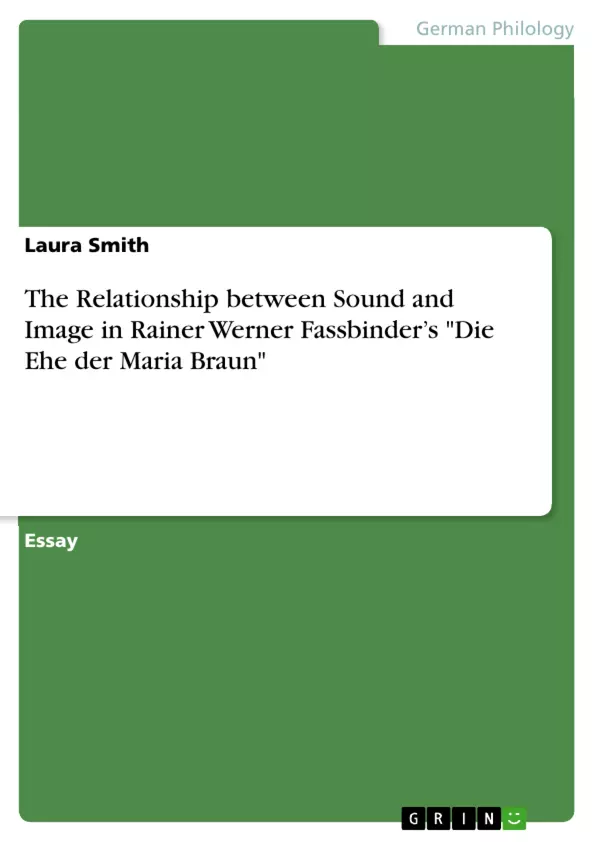The collision of sound and image in Fassbinder’s "Die Ehe der Maria Braun" provides an on-screen representation of the relationship between public and private life in the film. The contrast created by this collision is a distancing technique which encourages the audience to consider the implications of ignoring the political (public) world at the time of the Wirtschaftswunder and in their own time. This essay aims to demonstrate the way in which Fassbinder achieves this through his manipulation of sound and image, specifically examining the open and closing credits, the radio broadcasts of Konrad Adenauer’s speeches, Oswald’s piano playing and the final radio broadcast concerning the 1954 World Cup.
Inhaltsverzeichnis (Table of Contents)
- Sound and Image
- The Opening and Closing Credits
- Adenauer's Speech
- Oswald's Piano Playing
- The Jackhammer Motif
- Adenauer's Second Speech
- The World Cup
Zielsetzung und Themenschwerpunkte (Objectives and Key Themes)
This essay aims to demonstrate how Fassbinder uses sound and image in Die Ehe der Maria Braun to critique the relationship between public and private life in postwar Germany. The film's visual and auditory elements highlight the political indifference of individuals, particularly Maria Braun, who are engrossed in their personal lives while significant historical events unfold.
- The collision of sound and image as a distancing technique to encourage audience reflection
- The film's critique of postwar German society's complacency and its potential for authoritarianism
- The interplay between public and private spheres, particularly in relation to political awareness
- The use of Brechtian aesthetics to estrange the audience and provoke critical engagement
- The film's exploration of the "political is personal" theme and its relevance to the 1968 student movement
Zusammenfassung der Kapitel (Chapter Summaries)
- The opening and closing credits frame the film visually and aurally with explosions, highlighting the cyclical nature of political events and the film's warning against societal complacency.
- The scene with Konrad Adenauer's speech on disarmament contrasts the loud radio broadcast with the characters' trivial conversation, emphasizing their ignorance of the political climate.
- Oswald's piano playing, shifting from non-diegetic to diegetic sound, suggests that characters are governed by forces they don't understand, prompting the audience to question their own political awareness.
- The incongruent use of jackhammers after Oswald's death reinforces the theme of "Wiederaufbau" and the intrusion of the public sphere into the private, reflecting the political climate of the time.
- Adenauer's second speech, juxtaposed with Maria's emotional distress, highlights the tension between public and private illness, suggesting the consequences of ignoring political realities.
- The final scene with the 1954 World Cup commentary emphasizes the triumph of the public sphere over the private, culminating in Maria's tragic demise, which serves as a chilling reminder of the potential costs of political apathy.
Schlüsselwörter (Keywords)
The key themes and concepts explored in this essay include the relationship between sound and image, public and private spheres, postwar German society, political apathy, Brechtian aesthetics, estrangement effect, "Wiederaufbau," and the "political is personal" theme.
- Citation du texte
- Laura Smith (Auteur), 2012, The Relationship between Sound and Image in Rainer Werner Fassbinder’s "Die Ehe der Maria Braun", Munich, GRIN Verlag, https://www.grin.com/document/295713



